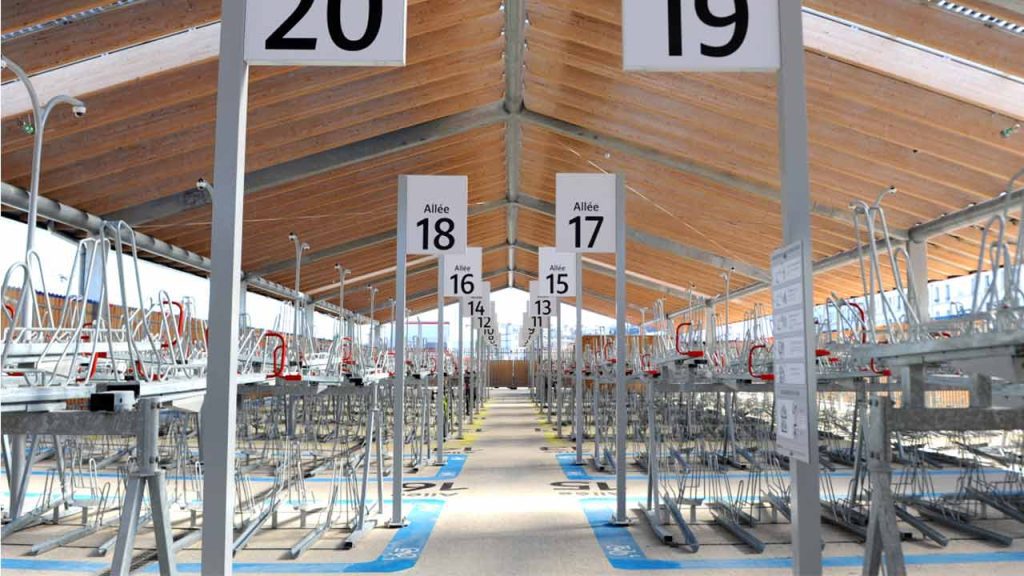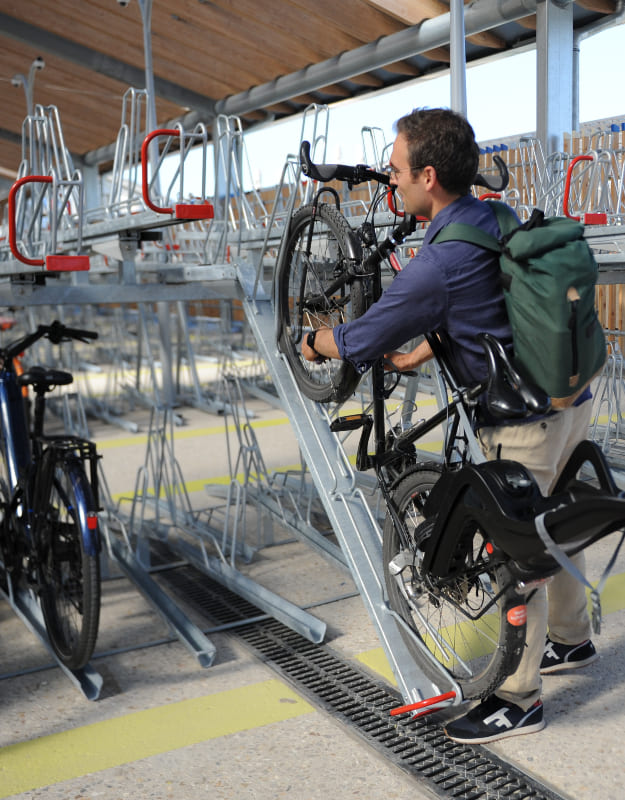Whether driven by conviction or obligation, the development of cycle parking at stations has become essential. The aim of this guide is to provide a basis for thinking about your project to provide cycle parking at stations.

Reminder: The goal of bike parking at train stations
Behind the installation of bike parking at train stations, there are three distinct objectives:
- Reduce the use of individual cars
- Increase the use of public transportation
- Limit the transportation of bikes on trains
The steps for your bike parking project at train stations

Designing the interior of a bike park: fluidity, legibility and comfort
A bike parking facility at a train station is not just a parking space. To be truly effective and attractive, its interior layout must facilitate movement, guide users, and meet a variety of needs.
At Altinnova, we understand that certain elements are crucial to ensuring smooth, practical, and pleasant parking. It’s not enough for the equipment to be secure or well-placed. The layout must also be carefully considered:
- Manage traffic flows and guide users,
- Prioritize easy-to-use installations and choose the right racks,
- Optimize the available space and the number of spaces without sacrificing mobility,
- Offer useful complementary services for cyclists.
1. Integration into the area and station
Good bicycle parking starts outside the station, in its immediate surroundings. It must be connected to a structured cycle network, with safe routes. Its location must be strategic: close to the platforms, visible, easily accessible and integrated into the natural flow of traffic. The efficiency of the journey from the parking lot to the platform is as important as the distance.

2. Comfort, safety and ease of use
Safety is essential, both for the user and their bike. Lighting, visibility, the absence of corners or dead ends, access control, and surveillance (human or video) are features that cyclists will appreciate.
Comfort and ease of use are ensured through an efficient and effective layout. The speed and fluidity of movement should be guaranteed, especially in large spaces. Clear signage and readable pathways facilitate movement within the parking area.
3. Affordability and related services
A well-designed parking facility should also be economically accessible and enhanced with useful services. Free access should be prioritized, or at least the first few hours should be free. Inconsistent pricing (e.g., paid bike parking next to free car parking) strongly discourages usage.
A location offering protection against the elements is expected to protect bikes and improve user comfort. A complementary bike service offering adds value: charging stations, repair stations, lockers, vending machines, bike rentals, or human support. These services, when clearly visible and well communicated, help make the parking facility more attractive and complete.